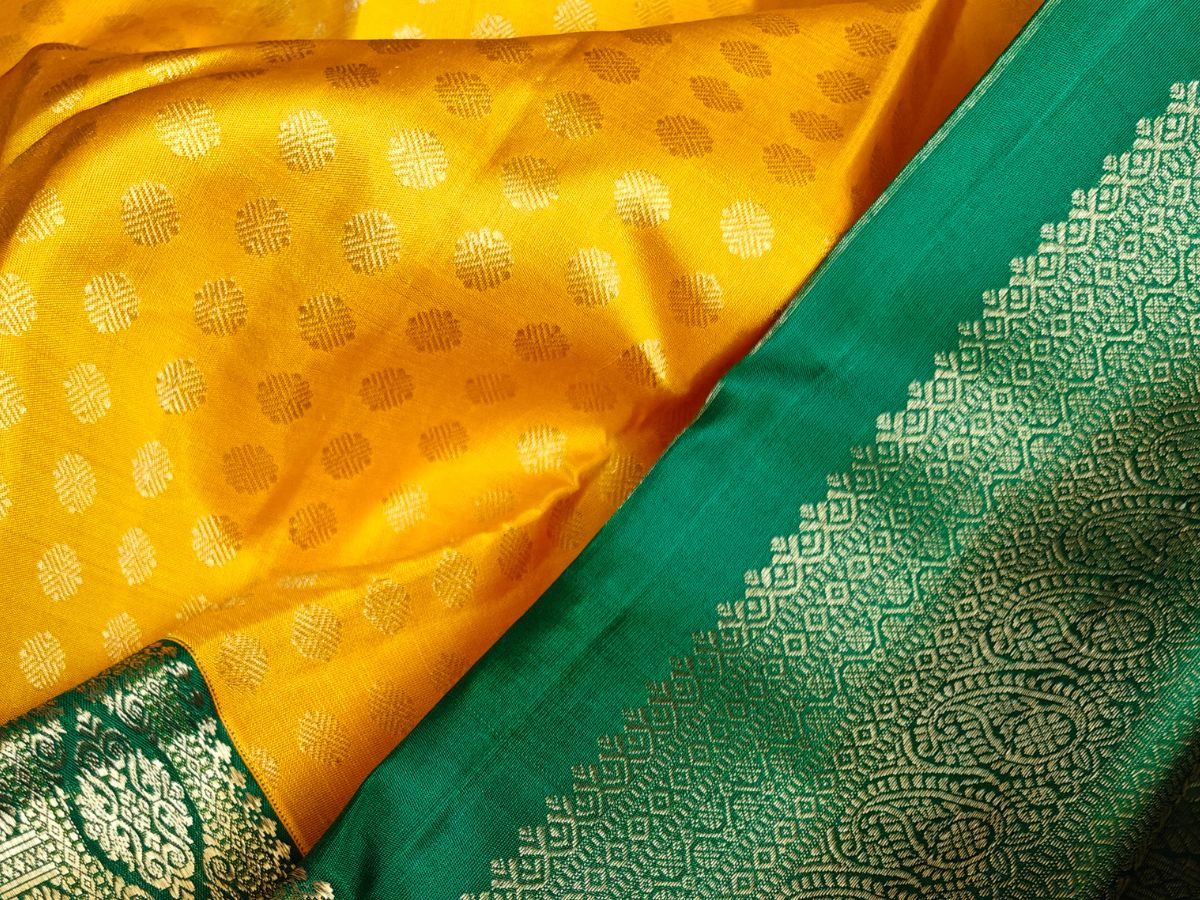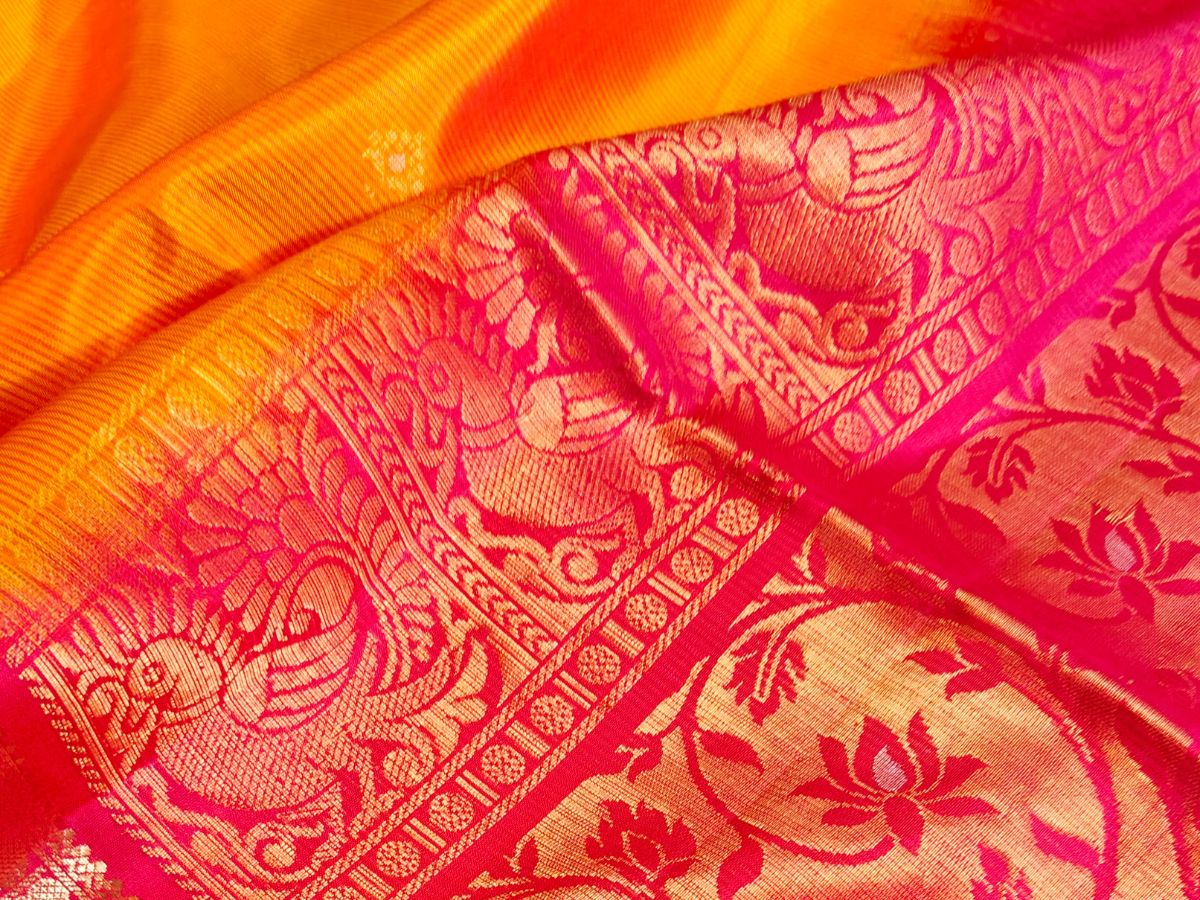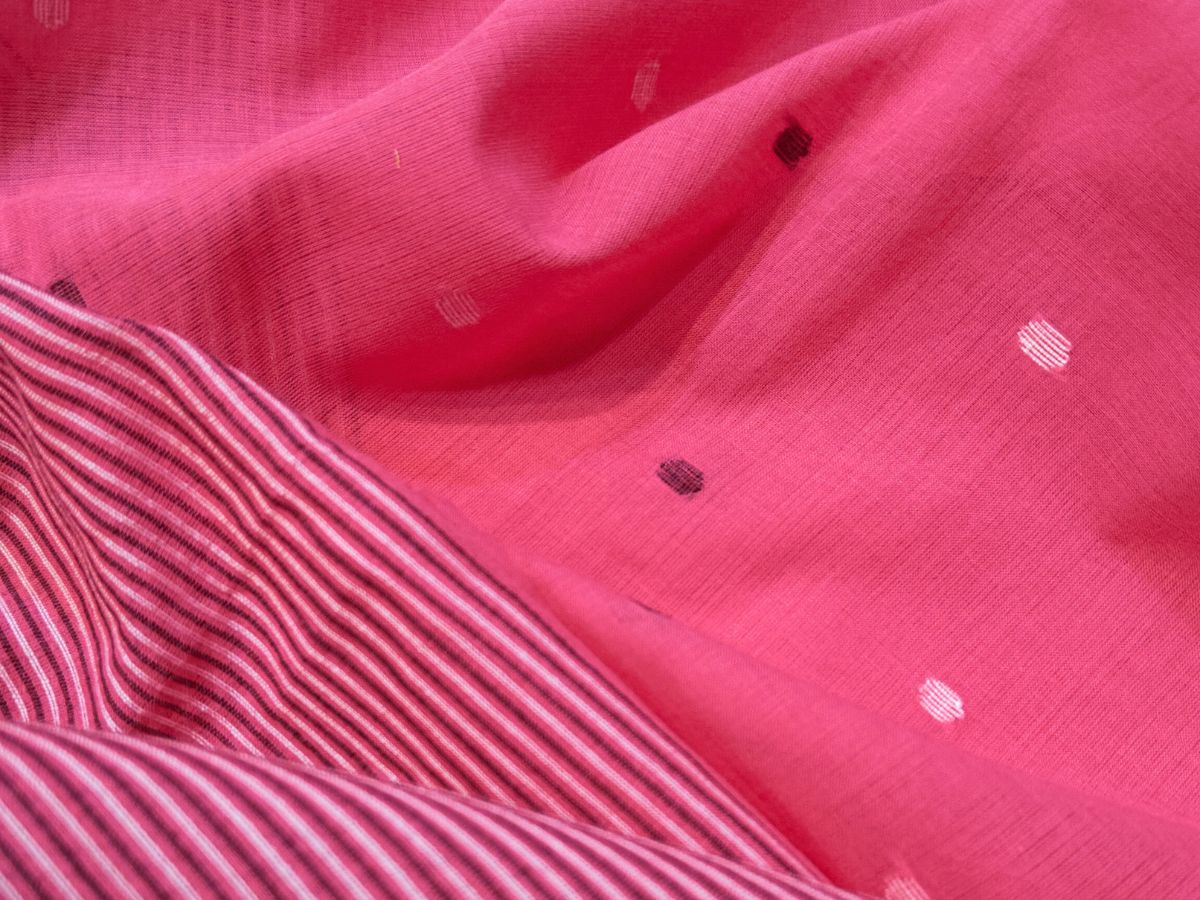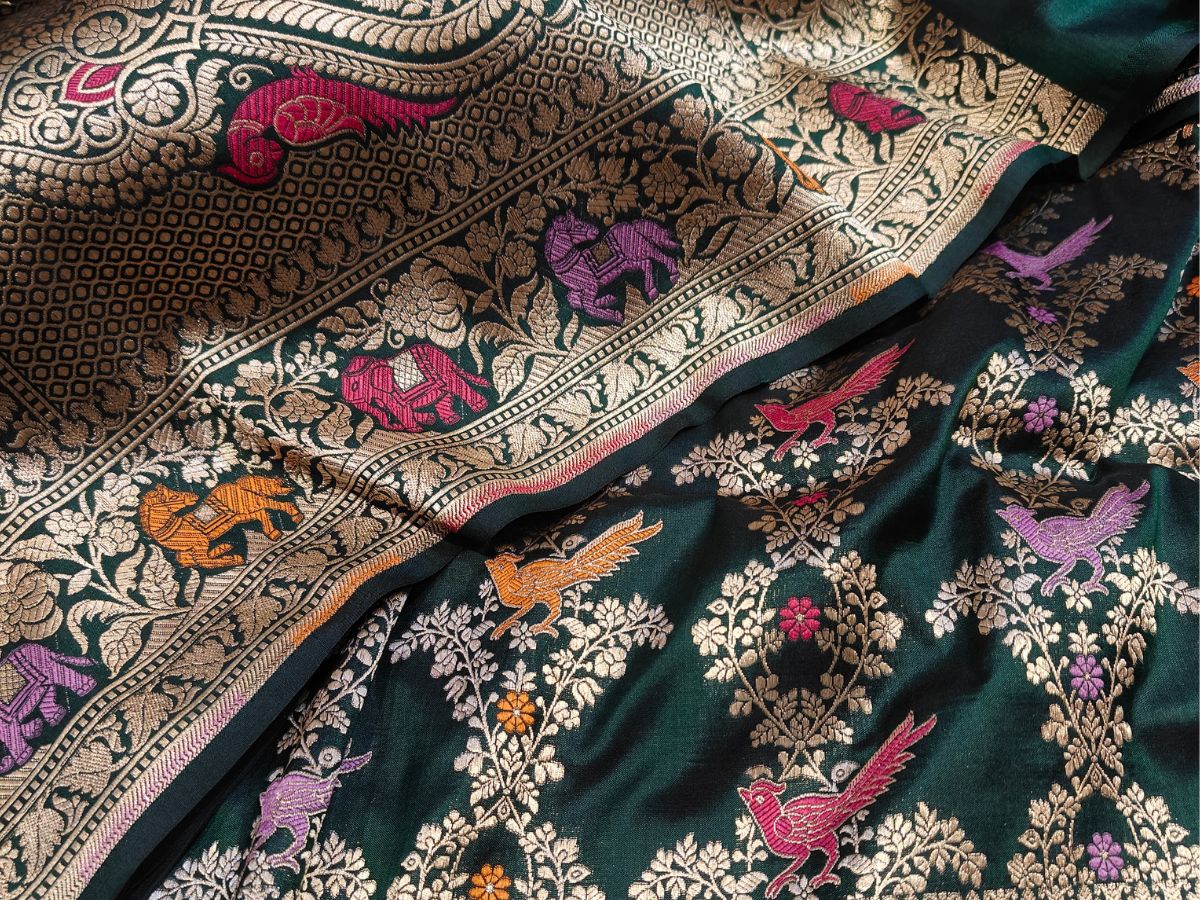The Modus Operandi of the Indian Woven Spectacle

India is synonymous with diversity and so are Indians! Even a rectangular piece of fabric can become the trendiest ethnic attire without losing its inner core.
An amalgamation of art and technique, these swathes of unstitched cloth is brought to life with its various draping styles.
The Genesis of Draping – The novel draping style called as ‘Thakurbari’ style introduced by the women from the Tagore family of Jorasanko was hugely supported by the Brahmo Samaj and eventually named the ‘Brahmika’ style of draping. Jnanadanandini Debi Tagore influenced by the Parsi Gara changed the pallu from the right shoulder to the left shoulder as she preferred the right hand for courtesies. Recognized by the Indian Post, a stamp was released in 2019 depicting a Brahmos woman wearing an elegant Brahmika saree.
The Recognized Rendition in a global forum- The modern recognized wrap is stemmed from the Nivi drape of Andhra Pradesh. No longer considered a regional drape, the ‘Nivi’ drape is derived from the word ‘Naveen’ which means new. Draped comfortably with weaves of any fabric, this congenial styling is popular across the globe as a symbol of the contemporary Indian culture and is elementally linked with colonization and politics. Popularized by Raja Ravi Verma, the traditional and modern styles of the nivi drape are beautifully depicted in his paintings. Our vast collection of weaves from Dakshinam Sarees can beautifully accentuate the feminine and spirited features of women slipping on in this style.
The nivi drape is worn with one end of the saree tucked into the petticoat and wrapped around with pleats gathered beautifully and pushed into the waistband of the petticoat. The loose end called the ‘pallu’ is draped diagonally over the left shoulder.
The kaccha nivi, another style inspired by the nivi drape has its pleats passed through the legs and tucked into the waist at the back allowing free movement while covering the legs.
The Disparate Iterations of the North –
Athpourey style - This popular draping method from Bengal has its pallu thrown over both the shoulders from back to front, and the pleats are worn in a box style.
Nauvari style – The original nine-yard fabric from Maharashtra is worn like a dhoti between the legs and tucked around the waist, and the upper part is worn like a normal saree and is beautifully demonstrated by the proud Lavani folk dancers.
Seedha pallu style – This style of Gujarat, Uttar Pradesh, and Odisha has its loose end draped back-to-front over the right shoulder rather than the left. Extremely comfortable these wraps permit free movement as the heavy pallu’s weight does not fall on the body directly.
Gol Saree – This Parsi drape has its pallu called the ‘Gara’ taken from behind over the left shoulder like a veil where it hangs in loose folds and is brought over the right shoulder and the folds are displayed in the front.
Makhela Chadar – The Assamese handloom sarees comprises of two pieces, with one piece worn at the bottom like a sarong, while the second piece has its one end tucked around the waist on the left and another end is thrown over the shoulder like a shawl.
The Dravidian way of wrapping –
Coorgi style – To facilitate the climb over the hilly regions of the Western Ghats of Karnataka, the women styled the saree with pleats at the back and the fabric is brought from the back under both the shoulders and tied securely on the right shoulder with a knot. Worn by brides for their weddings in this style, the women proudly flaunt the Kanjivaram weaves.
Pin kosuvam – Adopted by the women of Madurai, Coimbatore, and Chettinad households this saree is strategically worn above the knee and doesn’t require a petticoat.
Madisar – Following the Ardha-Nareeshwara (half man-half woman) style of draping, the lower half is draped like a dhoti, and the upper half is pleated like a saree by the Brahmin culture of Tamilnadu. Pallu being worn over the right shoulder by the Iyers and the over the left-shoulders by the Iyengars, this attire is flaunted during special occasions and by women after their marriages.
Mundum Neryathum- A traditional and old remnant of the saree worn by women of Kerala, this styling consists of two pieces of fabric with mundu (lower garment) over the hips and neriyathum across the front torso covering the shoulder.
Sinhalese Kandyan style – Derived from the Kandy region of Sri Lanka, this style is donned by the Sinhalese women with a full blouse completely concealing the midriff, and the tail of the pallu is neatly pleated and tucked.
The Ceremonial Importance – This vast canvas of beauty has been celebrated by women of all cultures and religions, flaunting them during every important occasion in their lifespan. Prioritizing the saree for a wedding is imperative and a lifetime memory for every woman out there. At Dakshinam Sarees, our exquisite and unique wedding collections in varieties of Kanjivaram, Gadwal, Banarasi, and Soft silk weaves help maintain the balance of design, luxury, and budget explicitly with a bewitching array of prints, motifs, palettes, and zari.
In South India, traditionally presented to the adolescent girls of Tamil Nadu, Andhra Pradesh, Telangana, and Karnataka when they reach their puberty, the Half saree or the Langa voni/ pavadai dhavani/ Langa davani that comes with a pavadai (skirt), sattai (blouse), and dhavani (the wrapped upper rectangular fabric), symbolically marks the transition of a young girl into womanhood.
The Sartorial choice of female politicians right from Indira Gandhi, J Jayalalitha, Sonia Gandhi, Sushma Swaraj, Nirmala Sitharaman, Vasundhara Raje, Brindha Karat, and many more in India have been the handwoven sarees which represent the power dressing deeply connected to the roots of the nation.
The explosive experimented styles – In a plethora of voguish attires, the bodacious saree stands out. Fashionistas have seeped in the western trend with a bit of tweaking into our traditional clothing with various innovations like the belted saree, Mermaid style, Pant style, Jacket over saree, Lehenga style, Pre-stitched cocktail, and many more.
Spelling out its characteristic beautifully on the wearer donning various styles, it sure transcends modern ethnicity.
The rich binding attire of the entire nation depends on the loom and threads of our artistic artisans. From the womb of Dakshinam Sarees, our weavers knit your dream to reality boosting the unique personality of every woman’s silhouette.










